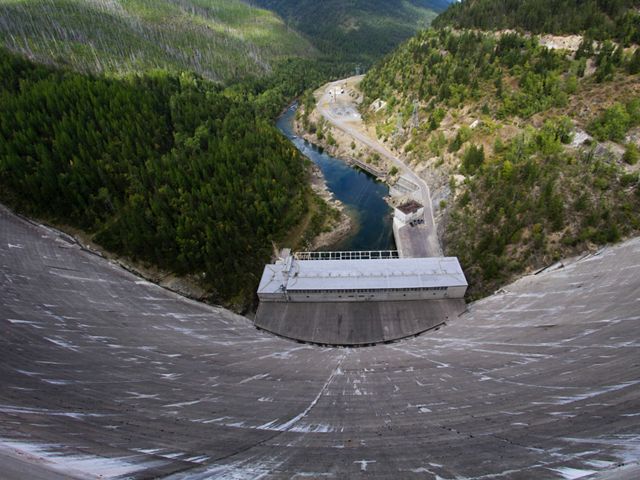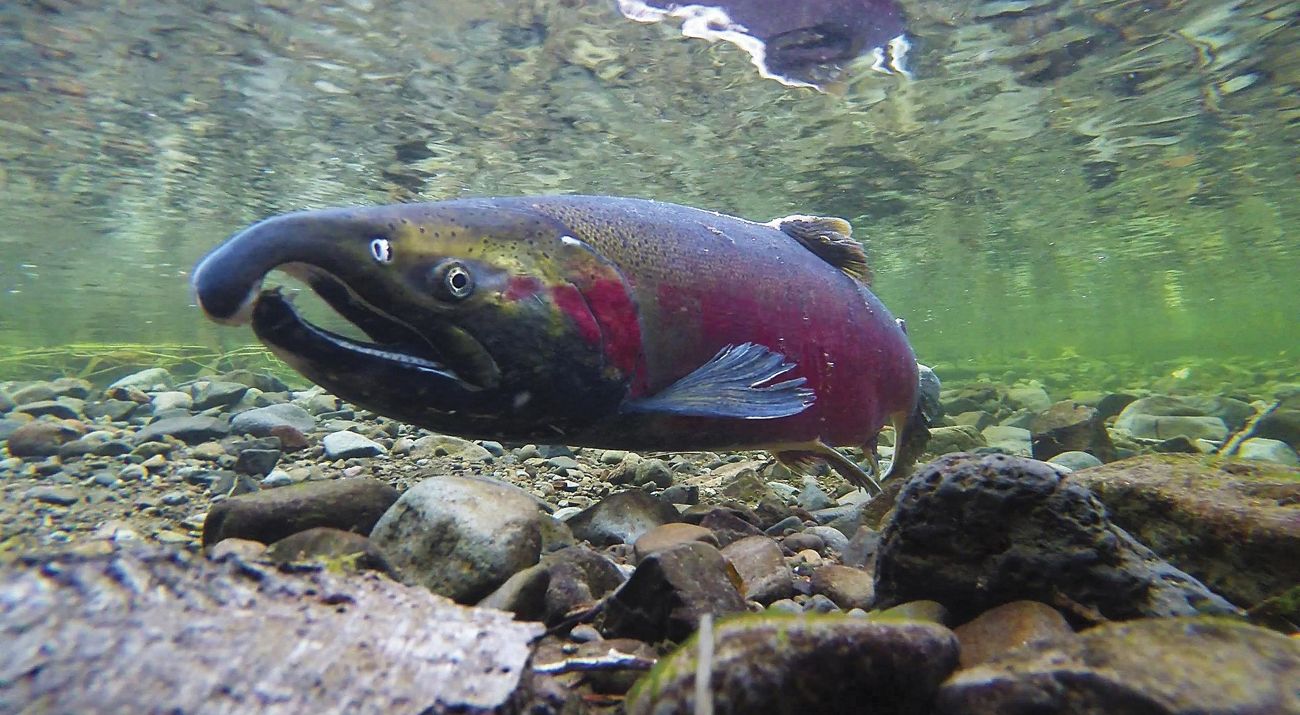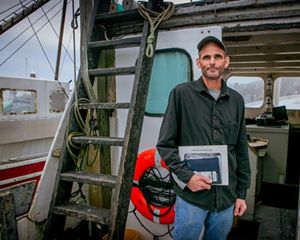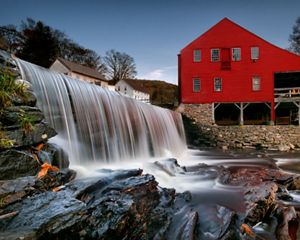This May be a Watershed Year for Rivers and Migratory Fish
World Fish Migration Day highlights unprecedented opportunities for restoring rivers and fish.
Since May of 2014, the biennial event of World Fish Migration Day (of which TNC is a founder and regular sponsor) has shined a spotlight on the challenges faced by millions of fish that must travel hundreds to thousands of miles for their life cycle through the recruitment of a celebrity ambassador in British TV presenter and fisherman Jeremy Wade; a "Eurofishion" song contest; and a video spot titled "Fish Can't Travel Like We Can" that... well, you should just watch it.
But the splashy marketing has a serious purpose. World Fish Migration Day (May 21) is elevating a critically overlooked environmental challenge that goes beyond fish: the fragmentation of rivers. And this year offers unprecedented opportunities for river restoration.

Declining biodiversity, growing health threats
Connectivity is the continuous flow of water, organisms and energy through a watershed. When connected, rivers function like superhighways, linking land, freshwater and ocean habitats and transporting water and nutrients between them.
When rivers become fragmented by dams, culverts and other barriers—as is the case for more than two-thirds of the world's major rivers—it can have devastating effects on all these habitats and the people and wildlife that depend on them.
Freshwater ecosystems are among the most degraded in the world. Freshwater species populations have declined an average of 84% since 1970, and fragmentation is a big reason for that, along with pollution and over-extraction of water.
Anadromous fish like salmon that move between rivers and the ocean are particularly affected, but even species that migrate within a shorter segment of river suffer when connectivity is disrupted. Terrestrial ecosystems are affected, too, since many river-adjacent habitats depend on regular flooding patterns to restore nutrients and recharge groundwater.
There are human consequences, too. Freshwater fisheries get less attention than their saltwater counterparts, but they are a vital source of food and income for over 100 million people, and barriers reduce the water quantity and flow of nutrients these fisheries require. Disrupted water flows can also lead to stagnation in larger reservoirs and the release of methane, a potent greenhouse gas. For some communities, fragmentation is literally stealing the ground from beneath their feet. Dams prevent the downstream flow of the sediments that build and replenish deltas; as a result, some communities downstream of major dams are literally sinking.

Protect, restore and avoid
One challenge is that most of these barriers were created specifically to facilitate human development. Impounded reservoirs can supply drinking water and lessen the risk of downstream flooding. Lock systems allow for navigation across river and lake systems. And hydropower dams are currently the world’s largest source renewable energy. How do we accelerate the clean energy transition without disrupting thousands of kilometers of rivers in the process?
"When it comes to improving river connectivity, we use a three-part strategy," says Joshua Royte, a senior conservation scientist with The Nature Conservancy (TNC) in Maine.' "Protect, restore, and avoid."

Protection is ideally permanent and durable protection through legal mechanisms. The Wild and Scenic Rivers Act in the United States is an example of this. The law creates a system to permanently protect ecologically and culturally important rivers. It currently protects over 20,000 kilometers of 226 designated rivers across 41 states and Puerto Rico and is the inspiration for new policies in development in the Western Balkans and other regions of the world.
Proactive planning and siting of new water, energy and transportation infrastructure development can also help avoid new barriers. "Sometimes the intended goals of a dam can be met other ways,” says Royte. “It may be more economical over the long run to improve solar or wind power rather than install a new hydropower dam." Where dams are unavoidable to meet development goals, comprehensive planning that considers the long-term impacts to ecosystems and communities can minimize the impacts that barriers almost always create.
In the Amazon River basin, for example, researchers from Cornell University, TNC and other partners used artificial intelligence to evaluate the potential impact of hundreds of proposed hydropower dams to identify scenarios that minimize disruptions for wildlife and local communities while meeting energy development needs. Meanwhile, programs like the Sustainable Rivers Program, a collaboration between TNC and the U.S. Army Corps of Engineers, can modify the operations of existing dams to meet the flow levels required to sustain river health.

"A once in a generation opportunity"
Restoration—the removal of existing dams and other barriers—can be a challenging strategy to deploy, but it is usually the most effective ecologically and economically over in the long-term. And this year could see unprecedented jump forward in restoration efforts.
Why? Bold policy proposals—and the funding to enact those policies.
The European Union's recently launched Biodiversity strategy—part of the bloc’s contribution to the upcoming UN global framework for nature—proposes to restore connectivity on 25,000 kilometers of river. The plan includes not only a mandate for EU member states, but funding to create enabling conditions and execute projects, especially for less wealthy states.
In the United States, the Infrastructure Investment and Jobs Act passed last year is providing billions of dollars for water infrastructure improvements, including $800 million for dam removals and $753 million for environmental, safety, and grid resiliency improvements to existing hydropower dams. The Twenty-First Century Dams Act, currently being considered by the U.S. Congress, would authorize up to $23 billion more for rehabilitating, retrofitting and removing dams if signed into law.
Quote: Sarah Murdock
This is a once in a generation opportunity to restore connectivity to some our great rivers.
Meanwhile, China, South Africa, and other countries are also removing dams or exploring ways to minimize ecological and social impacts and long-term costs of new dams.
"This is a once in a generation opportunity to restore connectivity to some our great rivers," says Sarah Murdock, TNC’s director of climate resilience and water policy in the U.S.
But new policies and even new funding streams don’t ensure success. "All this funding is incredible," Royte says, "but it will take more than just getting backhoes into streams. There's much we need to do so we're prepared to make the best use of funding."
Successful dam removal is not just an engineering task—it's also an ecological and sociological challenge. From a physical standpoint, the removal must be conducted in a way that restores natural flows and avoids excessive damage to the river habitat in the process. And from a social standpoint, community engagement is critical.
"Rivers, dams and lakes often become part of the identify of a place," Royte says. "They are connected to their communities' agriculture, recreation and culture." Infrastructure projects that don't start with community engagement—whether that’s adding a dam or removing one—are likely to run into serious challenges midstream.
Removing Barriers for Healthy Rivers and Fisheries
Dive Deeper on River Connectivity
See How We Work With Fish Migration and RiversProtecting rivers in the New Deal for Nature
There’s one more big opportunity to make progress on restoring and preserving river connectivity this year: the 15th meeting of the UN's Convention on Biological Diversity. Representatives from countries around the world will finalize a new global framework to protect nature in this decade—a "New Deal for Nature." That framework should include a unified global approach to freshwater restoration and protection, says Amy Newsock, TNC’s global freshwater protection program advisor.
“Rivers are as diverse as the people who walk this planet, but there are common elements,” Newsock says. “We already have unifying frameworks for land protection—World Heritage Sites, for example. We want there to be this common language for fresh water, too—something that everybody can apply to their unique context.”

Subscribe for More Insights
This article is the first in a two-part series on technology and innovation that ran in the March 2021 issue of the Global Insights newsletter. Subscribe here to get part two and other exclusive insights like these straight to your inbox.



